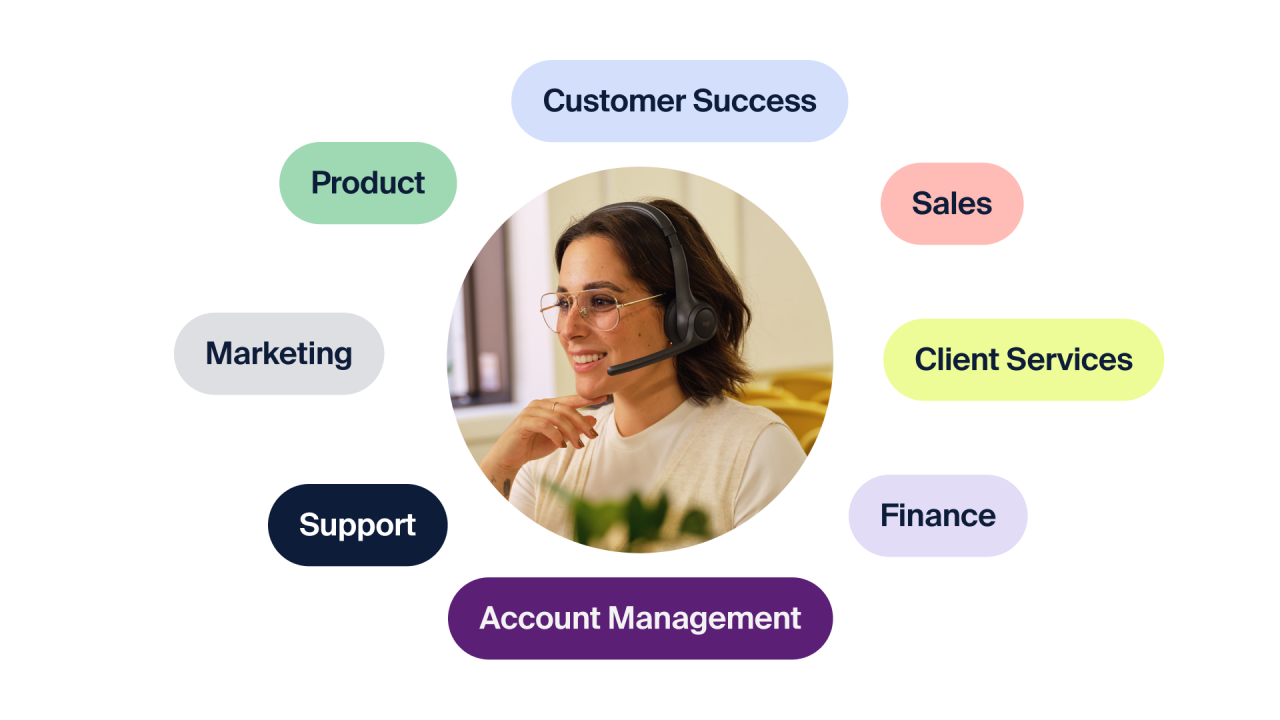
The secret sauce to better customer experiences? Cross-functional collaboration.
My team roughly receives 1,200 customer inquiries a week across our emails and chats.?
That’s about 62,400 messages a year, meaning there are 62,400 opportunities for us to get an overall sense of what our customers need help with. My team set out to categorize the messages by topic and/or customer sentiment, sharing the idea with engineering to see what feature we could build that used AI to help do the heavy lifting.
As my team pressure tested the feature, we passed along our feedback to engineering and product teams. We kept iterating until we felt good about how AI automatically tagged messages and improved our workflows. Over time as AI learned, we were able to uncover sales opportunities that were routed to our sales team for faster follow up.
AI helped us understand our customers better, but more importantly, we couldn’t have done it without collaborating with teams outside of support.?
It goes to show that the customer experience does get better when it’s all hands on deck, whether you’re in support, engineering, sales, finance, product, design, customer success, or marketing.
Big wins of connecting support with the wider org
Some of the struggles I hear from my peers is the disconnect from the ticket to the internal communication platforms. Or, the cross-team input for a case is spread across systems and support leaders grapple with consolidating it all together. If companies truly want to be customer-first , they’ve got to bridge these gaps.
I touched on this in the last edition , but when your whole company rallies behind the customer experience, it makes the cross-functional collaboration more genuine and in a team spirit — because we’re all trying to make things easier for our customers, launch better products, and create delightful experiences.
Here are some cross collaboration and feedback loops we’ve experimented with and the awesome outcomes that came of it:
I know I’m biased, but Front does make it easier that my teammates are just an @mention away and can hop into customer conversations at any given time.
If you’re in support and eager to “reach across the aisle” and drive cross-functional impact for your business, here’s a list of places where I think your support insights hold unique value:?
Want more on this topic? Join me with leaders who have shaped support at Stripe, Loom, and Wistia on the panel, “Breaking the support silo: CX as a company-wide objective” at Frontlines on October 8. Register today !
More tools for your support team:
ICYMI: the first edition of Top-Tier Support was about why I wished we had made Front’s support metrics public sooner. Spoiler: there is no “perfect” time. Go for it ??
IT Support Desk Leader building award-winning support departments | Agile | ITIL | SaaS | Voice of the Customer | Author of The Customer Support Chronicles Blog on Medium
1 周Kenji Hayward, I've been following you awhile and what you are posting, I am really enjoying what you are saying. Thanks for the listen on the Growth Support Podcast, Neal Travis ??and I seem to agree of the importance of building relationship, and how that can really facilitate buy-in, help with investment in the Support Function, help with Career Opportunitites for the folks you are lucky to serve!
Senior Manager | 15+ years Leading Global Teams, Program Management, Cross-Functional Collaboration, SaaS, Process & Procedures Improvement, Program execution, Customer Satisfaction & Operational Excellence | Seattle, WA
1 个月Kenji Hayward after re-reading your article I have a follow-up question. What tool do you use to AI tagg your tickets? Is it part of your ticketing system or you use something on the top of it?
Senior Manager | 15+ years Leading Global Teams, Program Management, Cross-Functional Collaboration, SaaS, Process & Procedures Improvement, Program execution, Customer Satisfaction & Operational Excellence | Seattle, WA
1 个月Absolutely! Cross-functional collaboration is indeed the secret sauce for enhancing customer experiences. It’s fascinating how aligning teams like engineering, product, and design can create a holistic view of the customer journey. In my experience, fostering open communication and feedback loops not only improves workflows but also leads to innovative solutions that directly benefit the customer. For instance, involving marketing in product discussions can lead to more targeted messaging that resonates with users, while input from support teams can highlight real customer pain points that need addressing.
I help you help customers, teams, and businesses - Head of CX @ AIHR - Host of Growth Support
1 个月Building cross-functional relationships by providing better insights, looking for cross-sells, and more is a great way to not only move the business forward, but also help to get people coming to support for more. These are some great examples, and I'll add that recently the team and I have been focusing on really driving churn insights and savings to the business, and it has also made for some really great conversations around closing the gap on retention. It's a simple change, but getting reps to relay this information back can lead to a world of difference in the long term. Nice article!
Leading Global Support Teams with Focus on Customer Success | 42% Faster Issue Resolution | 95%+ SLA Compliance | CSAT 4.7+ | Hands-On | Director of Support | Head of Support | Support Team Lead
1 个月Support team is definitely one of the “central” players cause you interact with different teams all the time- today you talk to R&D regarding deliveof some fix, tomorrow you go to Product to ask re: some feature request that could appear following work on the ticket and I think support guys are counting chats with CSMs in 10.000 a year at least)